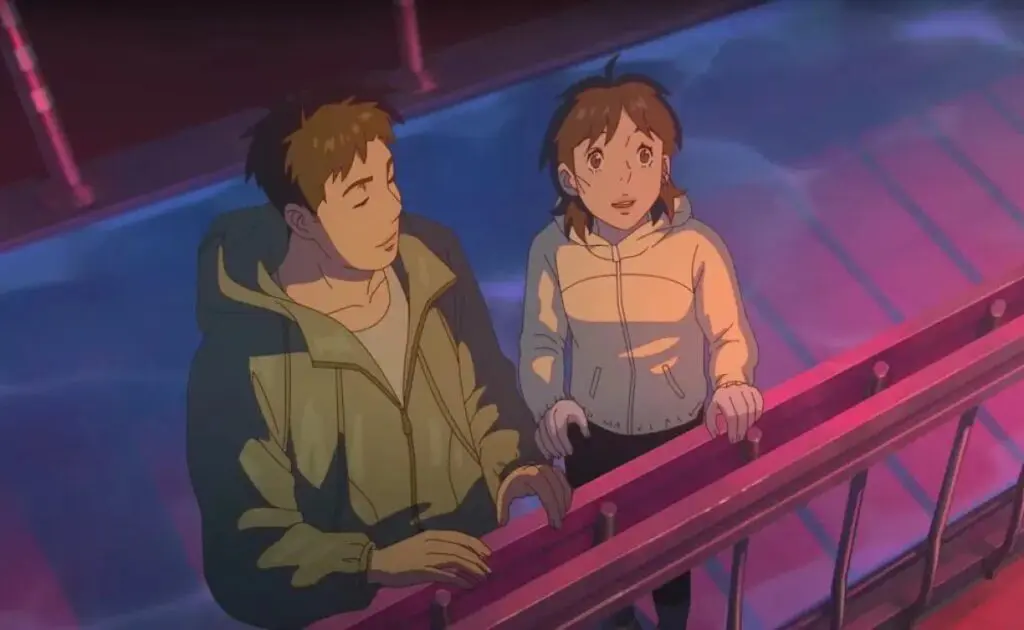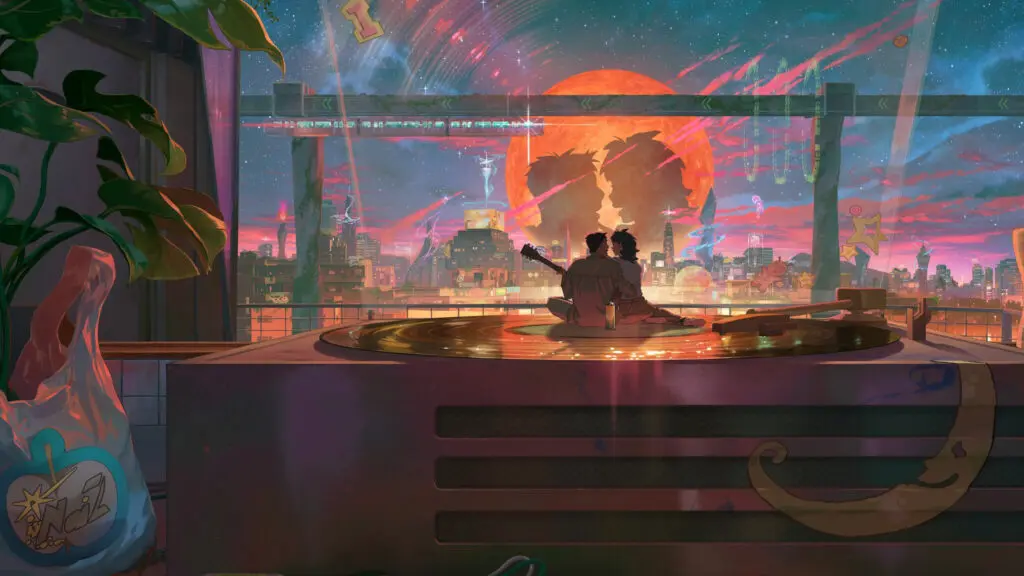
Lost in Starlight is something of a first. It has been branded as Netflix’s first Korean animated feature, which is technically accurate, despite the prevalence of Korean animation in multiple better-known projects, like Devil May Cry and The Witcher: Sirens of the Deep. But this is an original story penned by director Han Ji-won and Kang Jyun-joo; a South Korean animation with a South Korean team built exclusively for the platform. It’s also, for its worth, a rather beautiful bit of work.
It’s a romance, let’s get that straight. Allusions to sci-fi notwithstanding – one half of the main pairing is an astronaut and good chunks of the 90-minute movie are set in space and on Mars – the story builds on a deeply grounded, very terrestrial firmament. There’s a whiff of Interstellar about the whole thing in how it uses the conceits of space travel as a lens through which to view human connection as it’s strained and pulled around by life’s various obstacles. At its core, this is a movie not about space, but about love.
Protagonist Nan-young (Kim Tae-ri, Revenant) is nonetheless an astronaut, though. In fact, she’s the daughter of the first Korean astronaut ever chosen for a Mars mission, and wants to follow in those historic footsteps. But it’s easier said than done. When she fails the final test to get aboard the fourth Mars Expedition Project, she’s sidelined as a back-up and forced to wait, and while waiting, she runs into Jay (Justin H. Min), a musician who looks down at vintage audio equipment in the same dreamy way that Nan-young looks up into the stars. Almost immediately, romance blossoms.

Nan-young and Jay are both excellent, complex characters, and their romance is similarly fraught. Fundamentally, they’re in different places; Jay’s disillusionment with his music has left him reluctant to pursue his dream, whereas Nan-young is consumed by hers. He can see a life for them both in the present, fixed and safe, whereas Nan-young is looking ever up and ahead. They love each other, and that’s clear from the very beginning, but they have to pursue their own paths to find their way back to each other. When Nan-young is inevitably offered the opportunity to go to Mars, she can’t turn it down, but the fear of finding himself in the same position as Nan-young’s father, endlessly pining for a love lost to the unknowns of space, causes Jay to resist Nan-young’s ambitions.

A still from Lost in Starlight | Image via Netflix
This kind of impasse would typically lead to a break-up before a late reconciliation, but Lost in Starlight rejects that approach, instead focusing on the power of communication, compromise, and understanding, morphing into an exploded take on a long-distance relationship that gives true love the power to navigate even the stars. Much like how Jay repairs Nan-young’s old record player, the connection between these two characters allows them to repair themselves and each other, piece by piece, often at great length and in unconventional ways. As Nan-young’s mission becomes more perilous, descending into a kind of psychedelia, the human connection becomes even stronger and more meaningful.
It’s a wonderful idea supplemented by the quality of the animation, which uses detailed hand-drawn and sometimes CG styles to find a balance between the more outlandish spacefaring elements and the more terrestrial ones. Everything’s richly detailed and feels lived-in, with bigger ideas to communicate the technological advancement of 2050 Seoul and smaller flourishes to highlight how people haven’t changed a great deal in spite of them.
Lost in Starlight also excels in terms of its soundtrack, which drives a lot of the emotion and drama. It can arguably get a little too much in terms of being heavy-handed, but the hits outstrip the misses by a considerable margin, and there are sequences of extraordinary emotional power that wouldn’t work half as well without the fine calibration of the music choices. Like the visuals, the soundtrack plays up the emotional core instead of the sci-fi embellishments, another reminder that this is a movie about the power not just of chasing our dreams, but in having someone with us who believes we’ll get there no matter what – and, perhaps more importantly, will be waiting for us when we get back.


